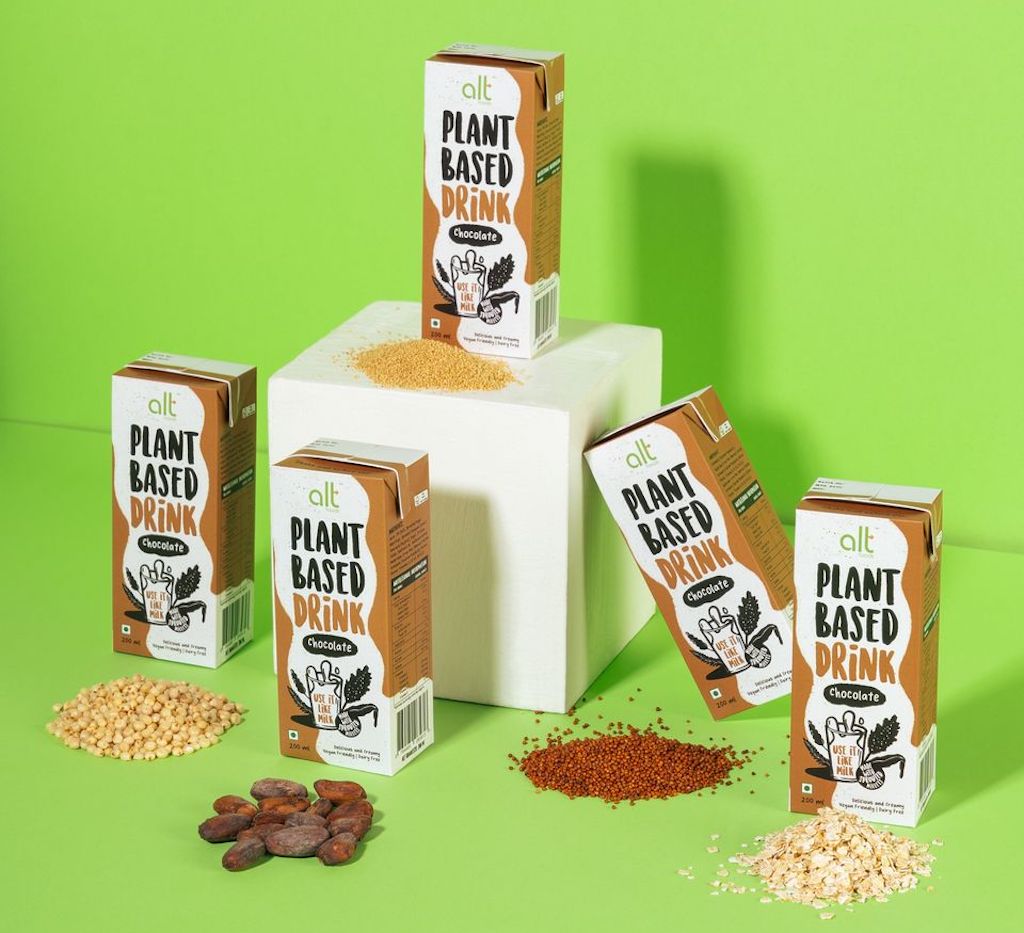6 Mins Read
Our four takeaways from an industry panel covering India’s smart protein sector, from industry growth to the country’s indigenous crop diversity.
By Poorvasha Kar
In a country like India where communities have varied and deep-seated cultural associations with animal-derived meat, eggs, and dairy – strengthening institutional and ecosystem support is key for bridging the gap between innovation and adoption. In keeping with this ethos, GFI India has, over the past three years, hosted regular community meetups in Mumbai, New Delhi, and Bengaluru to bring together stakeholders across the value chain under the same roof to move conversations around industry-building forward. In the same spirit of community building, 2023 is off to an exceptional start as we hosted our first community meetup in collaboration with Green Queen’s Sonalie Figueiras in New Delhi in late January to discuss trends and predictions for the Indian smart protein industry. The conversation was dynamic and full of insights, covering fundraising to product development and ecosystem building to the need for regulation. Below we share four takeaways from the industry panel that we believe will set the tone for India’s smart protein sector this year.

1) Smart protein is going mainstream
From millet milk to sizzling plates of kebabs, there are now 65+ smart protein companies in the Indian landscape offering more than 400 products. This boom in the sector has led to several celebrity endorsements (from beloved sports persons to Bollowyood heavyweights), and new product and category launches by household names like Tata Consumer Products, ITC, and Licious. Moving beyond the traction generated by early adopters, industry trailblazers have now set their sights on exploring other channels of expansion. While BVeg Foods, a plant-based company, is using its dedicated smart protein manufacturing facility to assist plant-based meat companies to produce innovative formats with high functionality, Greenest, a plant-based meat brand, is exporting its plant-based keema to the United States. With the category primed to cater to the critical masses of India, Varun Deshpande, Vice President, GFI Asia, noted that “activating the mass market potential of this sector is a huge lift that is going to take all of us coming together, partnerships across the value chain, and capital coming in at every stage.” Whether it’s introducing a plant-based menu at an eatery one casually strolled into or tackling the initial challenges of expansion, the evening served as a reminder that Rome wasn’t built in a day and neither will the smart protein sector. Figueiras also talked about India’s advantages as a trusted manufactured partner on the world stage, making it ideal as a regional, hub of plant-based production.

2) India’s indigenous crop diversity lends itself to multi-functional ingredients
In India, chai (tea) is often synonymous with life – in fact, for many of us, our days are carefully divided into beloved ‘chai breaks.’ We drink it to mark the beginning of our day, spend quality time with loved ones, wind down for the evening, celebrate our wins, and even soothe the bitterness of loss. For plant-based dairy startups, this ritualistic drink has become the checkpoint to enter the Indian household: can your plant-based milk create the perfect morning cup of kadak chai? Tackling this challenge head-on, smart protein startups have leveraged India’s rich agricultural biodiversity to think outside the box and experiment with ingredients and key inputs. By tapping into diverse varieties of rice, oats and almonds, as well as indigenous crops like millet, plant-based dairy startups have uncovered ingredients with higher functionality and taste. Millet, a climate-resilient crop that doesn’t require synthetic pesticides or fertilizers, builds soil carbon levels, and is resistant to heat and drought, holds immense promise as a functional input of choice for the global smart protein ecosystem. As we ring in 2023, which happens to be the International Year of Millets, and move closer towards that vision, we are reminded by Pavitra Khandelwal, co-founder of alt foods, a plant-based dairy brand, that smart protein got there first; “When we were conducting R&D with millet in tiny prototype bottles, the Year of Millets was not even a thing!” With millet taking center stage this year, we can’t wait to see the seeds of millet-based meat taking root.

3) Paging catalytic capital: the smart protein industry needs you
Despite investment trending upwards across Asia Pacific in all three smart protein verticals: plant-based, fermented, and cultivated, startups established and operating in India only drew in $6.6 million — a small fraction of the total APAC investment in 2022. Yet, these numbers don’t reveal the full picture of the Indian smart protein sector. Similar to any nascent sector, investment trends are yet to catch up with the sector’s long-term growth potential, technology-driven solutions, and ESG offerings. Thus, while the recent market correction means that valuations may no longer be sky-high, the alt protein sector remains ripe for investment, as startups rally to become more resilient. Rooting for more innovation in the sector, Sarthak Rastogi, Assistant Vice President of Huddle noted, “We want to back hilariously early-stage companies who have some sense of direction and are clear about their unit economics and capital efficiency. Considering gestation periods are not as aggressive as they used to be, we provide an initial seed capital and together with our partners we follow it up with another cheque.” With many early-stage startups looking to bridge the gaps in technological development and consumer adoption, there’s an active search for investors who can help this sunrise sector double down on its mission. In tandem with building the startup ecosystem, the smart protein sector also requires an in-flow of long-term catalytic capital to build manufacturing capacity, scale plant-based and fermentation solutions, and support end-to-end value chain development.
4) We need a uniform approach to labeling and nomenclature
Whether it’s scrolling through online retail apps or pushing a cart in a grocery store, coming across different terminologies for the same plant-based product (For example, oat mylk, oat beverage, plant-based drink) can not only confuse consumers but also deter purchase. As we build the smart protein industry from the ground up, it is important to build category awareness and employ a uniform approach to labeling and nomenclature. At GFI India, we recognize that this not only helps to send a clear message to the consumer but also mitigates geographic barriers to trade and regulation.
About the author: Poorvasha Kar is an Innovation Associate at the Good Food Institute India — the central expert organization, thought leader, and convening body in the Indian ‘alternative protein’ or ‘smart protein’ sector. Prior to joining GFI India, she was a Risk Advisory & Investigations Associate at FTI Consulting where she worked on business intelligence and pre-investment due diligence projects commissioned by global private equity firms and investment managers. Her work has been featured in the Times of India, The Weather Channel and the Saïd Business School, Oxford University.



